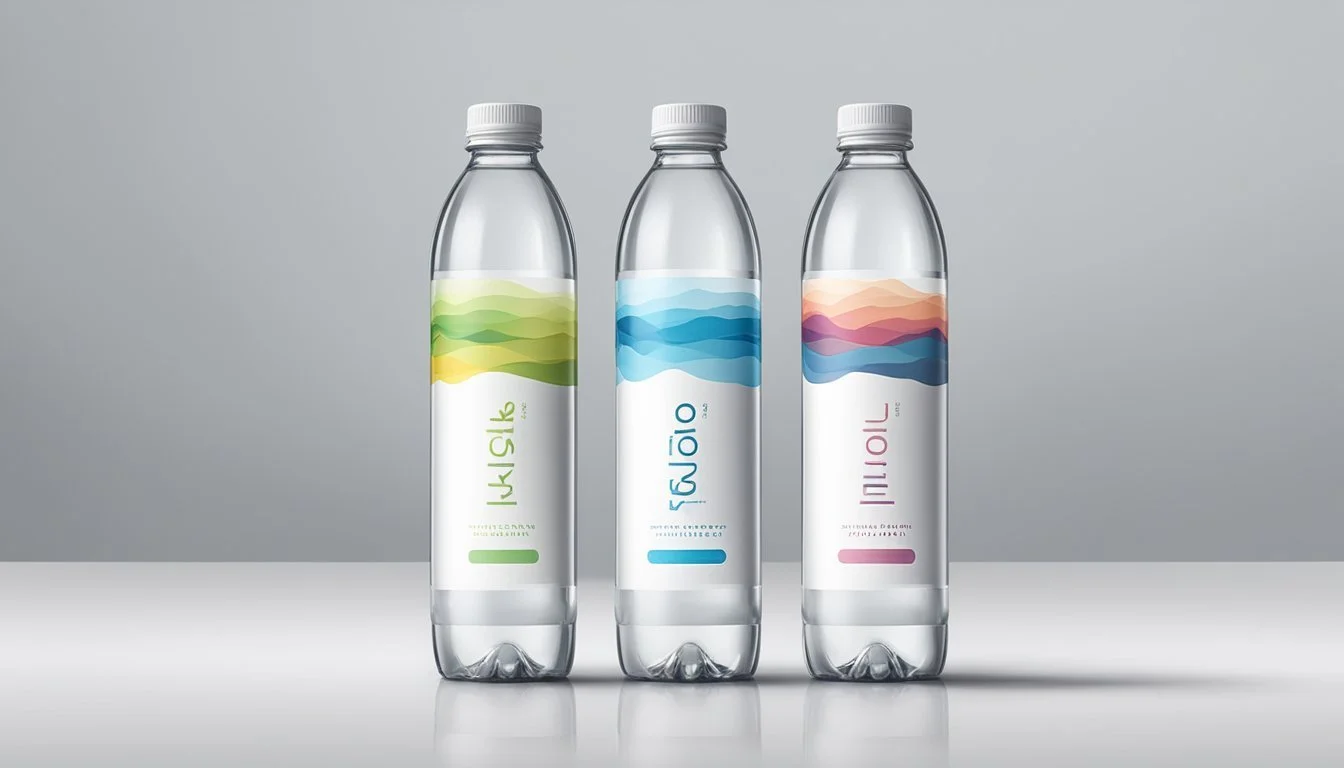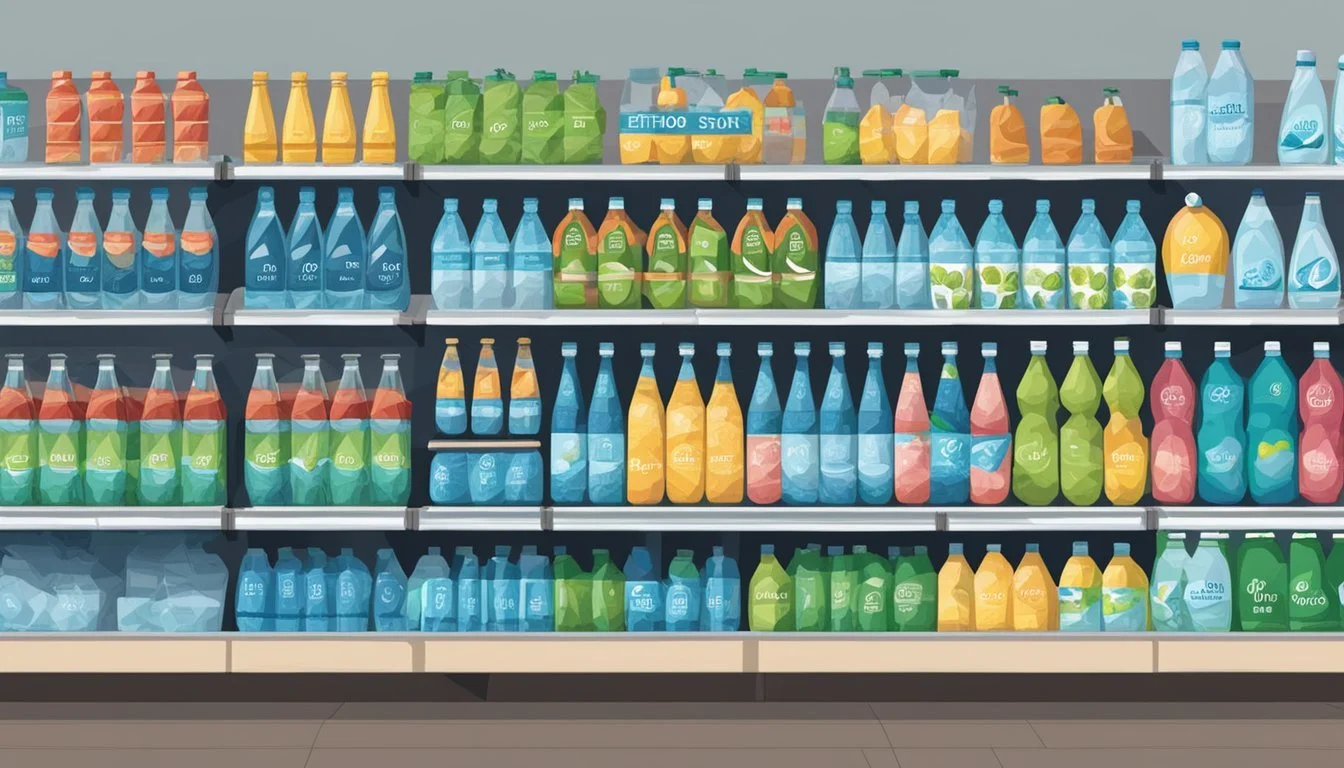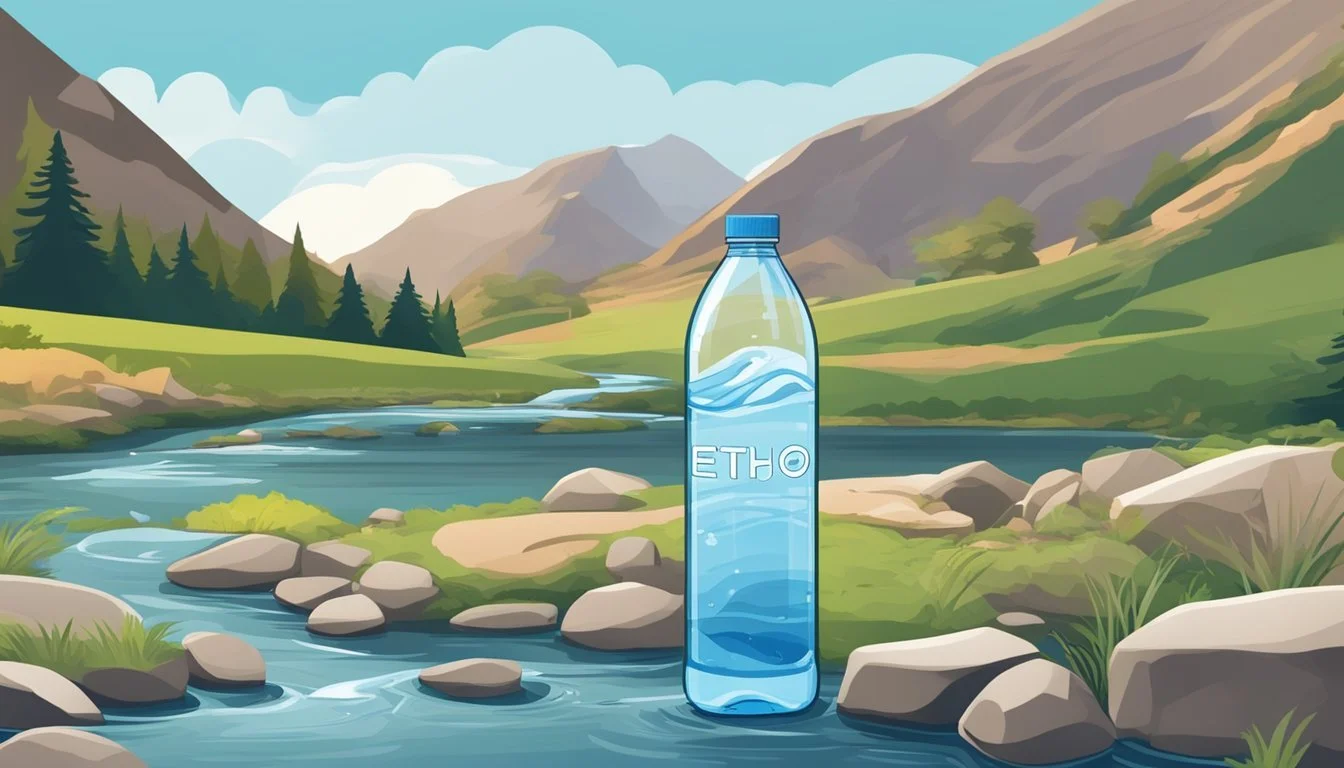Ethos vs. Flow
A Clear Comparison of Bottled Water Brands
Choosing the right bottled water can transform your hydration experience and support eco-friendly practices. Whether you're an everyday consumer or someone who prioritizes sustainable living, comparing Ethos and Flow bottled water brands offers valuable insights. Flow bottled water stands out for its commitment to natural alkaline water packaged in eco-friendly, renewable materials, making it a top choice for those who prioritize both health and the environment.
Ethos bottled water, on the other hand, carries a social impact, with a portion of sales contributing to clean water initiatives. This aspect adds a meaningful dimension to your purchase, allowing consumers to support charitable efforts while staying hydrated.
For those who value taste, environmental impact, and social responsibility in their bottled water, the choice between Ethos and Flow presents a compelling debate. Each brand offers unique benefits that cater to different consumer priorities, ensuring that the market for bottled water continues to evolve in exciting ways.
Understanding Bottled Water
Bottled water comes in many forms, with varying sources and different filtration techniques. To make informed decisions, it's essential to understand the types, origins, and treatments of bottled water.
The Different Types of Bottled Water
There are several types of bottled water, each with unique characteristics:
Spring Water: Sourced from natural springs and often bottled at the source. It retains natural minerals.
Mineral Water: Contains a specific mineral content, typically coming from protected underground water sources.
Purified Water: Undergoes processes like reverse osmosis to remove impurities. It generally lacks natural minerals.
Alkaline Water: Has a higher pH level, often achieved through ionization. Believed to balance acidity in the body.
Source and Origin
The source of bottled water significantly influences its composition and taste. For example:
Natural Springs: Sources like those found in limestone or volcanic rock areas provide rich mineral content.
Glacial Waters: Some brands use water from glaciers, offering purity and unique mineral balances.
Protected Underground Sources: Mineral water often comes from these, ensuring a consistent mineral profile.
Ethos Water sources its product with a mission of social responsibility, while other brands like Icelandic Glacial highlight their unique origins from specific natural environments.
Filtration and Purification Techniques
The methods used to filter and purify bottled water vary:
Reverse Osmosis: A comprehensive filtration method that removes most contaminants, making it ideal for purified water.
Ultraviolet Light: Used to disinfect without adding chemicals, ensuring safety while maintaining taste.
Carbon Filtration: Often used to remove chlorine and organic compounds, improving taste and odor.
These techniques ensure the water meets safety standards and consumer preferences. Each process affects the water's final taste, mineral content, and suitability for different uses. Ethos and Flow utilize filtration to enhance purity, reflecting their commitment to quality and safety.
Health and Hydration
Ethos and Flow bottled water brands offer distinct benefits related to health and hydration, emphasizing factors such as mineral content and safety standards.
Hydration and Electrolyte Balance
Flow water is an alkaline water with a higher pH level, which some believe can aid in better hydration and maintaining the body's pH balance. This is due to the presence of electrolytes like calcium, magnesium, and potassium, which are essential for maintaining fluid balance in the body.
Ethos water, while not specifically marketed as alkaline, is sourced and treated to ensure it has a balanced mineral profile. It supports hydration effectively by providing clean and safe drinking water, ensuring it meets the necessary FDA and EPA quality standards.
Additionally, Flow's naturally occurring electrolytes derive from its source, giving it a potential edge in supporting athletic performance and overall hydration.
Safety and Water Quality
Both Ethos and Flow adhere to stringent quality standards. Ethos water is rigorously tested to ensure it is free from contaminants. It upholds the standards set by regulatory bodies, guaranteeing safe drinking water. EPA regulations require regular testing for contaminants like lead and nitrates, which Ethos follows diligently.
Flow water is packaged in eco-friendly cartons, further emphasizing its commitment to environmental safety. Additionally, Flow claims to provide premium water with no added chemicals, making it a natural choice for those concerned about purity.
Ethos also promotes charitable contributions for global clean water initiatives, adding a social responsibility aspect to its brand. It ensures that while providing quality water, it also contributes to the improvement of global water health.
Both brands are committed to providing high-quality water, ensuring safety and effective hydration for their consumers.
Brand Comparison: Ethos and Flow
Ethos and Flow are two well-known water brands, each with distinct qualities and ethical focuses. The former emphasizes clean water access and charitable initiatives, while the latter prioritizes sustainability and environmental responsibility.
Ethos: A Starbucks Endeavor
Ethos Water is a brand under the beverage giant Starbucks. Each purchase of Ethos contributes to clean water initiatives around the globe.
Cost: Positioned as a premium option, Ethos often carries a higher price tag compared to standard bottled water. This aligns with its mission to fund global water projects.
Quality: Ethos sources its water from natural springs, offering a crisp, clean taste without significant aftertaste. This has made it a favorite among consumers seeking both flavor and philanthropic impact.
Impact and Ethical Considerations
Environmental Impact: Flow Water is marketed as a sustainable choice, employing eco-friendly packaging options such as paper cartons instead of plastic. This plays into the global push towards reducing plastic waste.
Carbon Footprint: Flow aims for a carbon-neutral footprint, partly achieved through renewable energy and efficient logistics practices. Ethos, while focusing on ethical water access, has faced criticism for its use of plastic bottles, which contribute to a higher carbon footprint.
Sustainability: Flow's commitment to sustainability is evident in its packaging and operational practices. Conversely, Ethos focuses on social sustainability by investing in clean water initiatives, though its environmental practices are less robust.
Packaging and Sustainability
Exploring the packaging and sustainability of Ethos and Flow, it is crucial to consider the environmental impact of plastic bottles and the alternatives to plastic such as boxed and glass options. Both brands aim to reduce their environmental footprint, but they approach it differently.
Environmental Impact of Plastic Bottles
Plastic bottles, though convenient and widely available, have significant environmental repercussions. Plastic bottles often contain BPA, a chemical potentially harmful to human health.
Ethos Water uses recyclable plastic, but the production and disposal processes still contribute to pollution. Even with recycling efforts, a large portion ends up in landfills or oceans, exacerbating environmental concerns.
Plastic recycling rates vary, and less than 30% of bottles are typically recycled in the U.S. Switching to alternative packaging could mitigate this issue. Flow Water opts for more sustainable materials and packaging.
Alternatives to Plastic: Boxed and Glass Options
Boxed Water and glass bottles present eco-friendly alternatives. Flow Water uses packaging primarily made of recyclable paper, aluminum, and plastic. This blend significantly reduces plastic usage and supports sustainable practices.
Glass bottles, though heavier, are more durable and fully recyclable. However, they are less convenient for transport and have a higher production energy cost. Despite this, their lower environmental footprint makes them a sustainable choice.
Both companies strive to align with eco-friendly values. Consumers should consider the production, recycling capabilities, and ultimate environmental impact when choosing between different packaging options.
Consumer Preferences and Availability
Ethos and Flow cater to different market preferences through taste profiles and accessibility. Understanding these differences helps consumers make informed choices based on taste satisfaction and where they can purchase these brands.
Taste Profiles and Palate Satisfaction
Ethos is known for its natural spring water taste, which can vary due to its natural source. Some customers appreciate its slightly tangy finish, indicating a diverse mineral content.
Conversely, Flow distinguishes itself with an alkaline water profile, featuring naturally occurring electrolytes and minerals. This can result in a smoother and less bitter taste.
Flow’s alkaline properties can be particularly appealing to those who prefer less acidic water. Each brand offers unique taste experiences appealing to different palate preferences.
Ethos: Natural, slight tang
Flow: Alkaline, smooth finish
Market Availability and Accessibility
Ethos is widely available in grocery stores and through Starbucks outlets, thanks to its partnership with the coffee giant. This makes it convenient for customers who frequent these locations.
Flow, meanwhile, prides itself on eco-friendly packaging and is sold in various grocery stores and health food shops. This includes major chains and online retailers, making it accessible to a broad audience.
Ethos’s presence in Starbucks adds a level of convenience, while Flow’s wide distribution channels ensure it is easily found across different shopping platforms.
Ethos: Grocery stores, Starbucks
Flow: Grocery stores, health food shops, online retailers
These availability factors play a crucial role in how easily consumers can access and enjoy each brand.
The Bottled Water Industry and Regulations
The bottled water market is a significant part of the global beverage industry, with sales growth highlighted by the 73% increase from 2010 to 2020.
In the United States, bottled water is strictly regulated on three levels: federal, state, and trade association standards.
At the federal level, the U.S. Food and Drug Administration (FDA) sets the regulatory standards for bottled water. These standards are designed to ensure the safety and quality of bottled water products available to consumers. The regulations cover aspects such as source protection, treatment processes, and microbiological, physical, and chemical standards.
State regulations may vary, but they often complement federal standards by adding additional safety measures for bottled water. States conduct inspections and enforce compliance to ensure that the bottled water sold within their jurisdictions meets all necessary safety criteria.
Trade associations, such as the International Bottled Water Association (IBWA), also play a role in the regulatory landscape. The IBWA enforces a strict bottled water code of practice. Members are required to undergo annual, unannounced plant inspections to ensure that they meet IBWA standards, which often exceed federal and state requirements.
Contrary to common belief, tap water is often subject to stricter regulations by the Environmental Protection Agency (EPA) compared to bottled water, which is overseen by the FDA. The EPA imposes rigorous standards and regular testing on municipal water supplies to ensure public health. This regulatory oversight can sometimes surpass the quality monitoring of bottled water.
Ensuring transparency and maintaining high standards remain crucial for consumer trust in the bottled water industry. The discrepancies in regulations between tap and bottled water highlight the importance of continued vigilance and improvements in both sectors.
Final Thoughts
Ethos and Flow offer unique benefits. Both prioritize hydration and quality.
Ethos stands out with its mission to provide clean water, emphasizing sustainability through charitable contributions. The taste of Ethos is often described as pure and refreshing.
Flow is packaged in cartons, highlighting its sustainability efforts. Its water is from artesian springs, giving Flow a taste that some describe as smooth and mineral-rich.
Comparison Table:
Feature Ethos Flow Hydration Essential electrolytes Naturally occurring Quality Purified water Artesian spring water Taste Clean and refreshing Smooth, mineral-rich Sustainability Recyclable bottles Eco-friendly packaging
Both brands cater to environmentally conscious consumers. Ethos focuses on social responsibility, while Flow emphasizes eco-friendly packaging.
In the end, the choice between Ethos and Flow may come down to personal preference and individual values regarding charitable causes and environmental impact.
More About Ethos
Ethos vs Mountain Valley Spring Water: Which Bottled Water is Better?
Ethos vs Richard's Rainwater: Which Bottled Water is Better?
Ethos vs Whole Foods Italian Still Mineral water: Which Bottled Water is Better?






